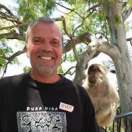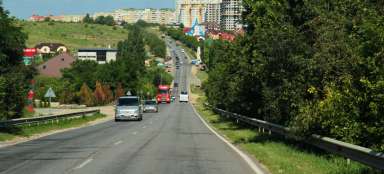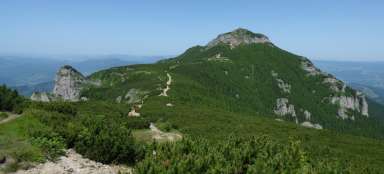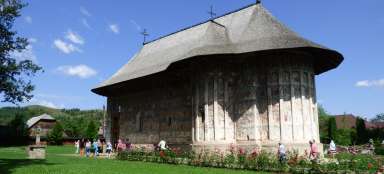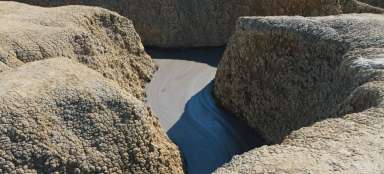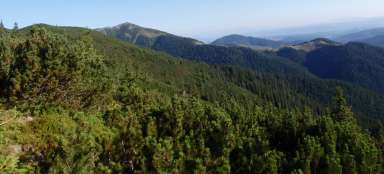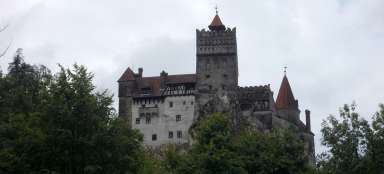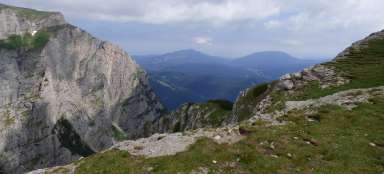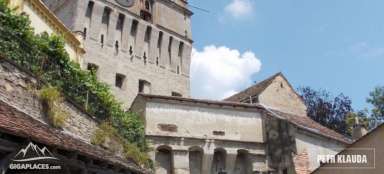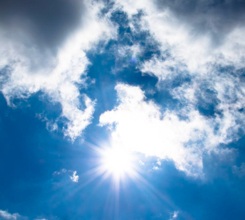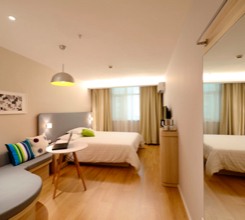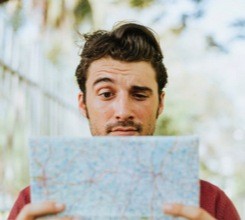Land of wine, monasteries and marshals.
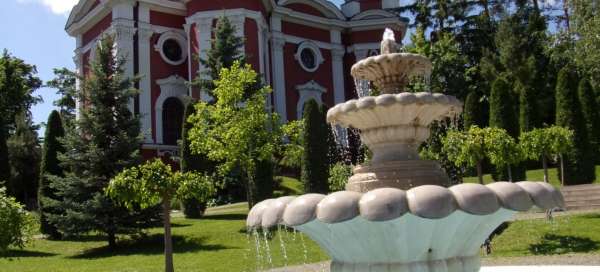
Moldova, an almost forgotten country in Europe, which is still waiting for its tourist boom
1 day
Arrival to Moldova and Chisinau
When someone asked me why I actually wanted to go to Moldova, the answer was simple. Because I haven't been there yet. When I was browsing various pages about Moldova, there were still only a few interesting things to see, among which various wineries dominated, which, in turn, is not an attractive tourist destination for me. In the end, I decided to stay in this country for about 2.5 days, taking public transport, which means another two days on the way. It is possible to fly to Chisinau by plane, but it is a transfer and the time of the total flight varies greatly, as well as the price of tickets. The right adventurer goes by bus. Here it is necessary to take into account the driving time of about 24 hours plus or minus the bus, because the quality of roads in Moldova and eastern Romania is simply not ideal. In addition, there are downtimes at the borders. If you are planning a bus trip to Moldova, you will not find exact information on IDOS. Departures and stops are different from reality. Companies stop at gas stations or simply somewhere in the city center by the road and call passengers by phone when and where they arrive. I will not describe the fact that our bus broke down in Brno, perhaps only that it was amazing how Moldovan drivers got a new bus after 6 hours 1400 km from home. The journey went smoothly. On the Budapest bypass, we received an excellent goulash soup in the motorway (it was included in the ticket price) and several times during the trip a hot drink and a small snack. A little delay came at the Moldovan border, actually because of me, as the only non-Moldovan ranger. I had an interview for about 20 minutes, where I go, why, where I live, work, marital status, etc., even in three languages. First in Russian, then when I mentioned my work in Germany, we switched to German, and finally the customs officer confided in me that he once worked in the Czech Republic and ended up in Czech. Otherwise, if you do not speak Romanian, Russian is almost a necessity. I didn't get much English. We arrived in Chisinau only three hours late, instead of half past one to around five o'clock. That day I only planned a tour of Chisinau. The hostel I chose was about a 15-minute walk from the place where the bus dropped us off, so I managed to stay quickly and take a short tour of the capital. I also had to exchange my local currency. So you can find the MDL Moldovan lei in numerous exchange offices or banks in the city center on almost every corner. The exchange rate differed by about 1 Lei per Euro between the best and the worst exchange rate, and if you search, you can also get an exchange office where you can exchange Czech crowns. Moldova is not yet one of the places where crowds of tourists go, but even here the situation is changing a bit and travelers are beginning to discover this country. Chisinau does not have a classic historical center, it took over during air raids during World War II, so it is necessary to discover monuments a bit in several places in the city. I first head to the main street Stefan cel Mare si Sfint, on and around which there are several attractions. On the one hand, it is the local town hall with an information center, which is open on weekdays until 7 pm and you can get a free map of the city (as in the Czech Republic) and a simple map of the country with attractions. Otherwise, the experience of buying maps: in bookstores, maps are also sold in the form of brochures, which would certainly be free with us. There is also the Cathedral Park with the triumphal arch and the Cathedral of the Nativity, on the opposite side is followed by the Central Park of Stephen the Great with several fountains, in the next block Parliament (a typical building from the USSR) and opposite the newly built presidential palace (rather reminiscent of the renowned companies). I still forgot about the building of the National Theater of Opera and Ballet. The last building I went to was the Church of the Transfiguration of the Girl, and then I came back. Behind the town hall you can then notice the organ hall and the National Theater. The character of the city suddenly begins to change. High-rise buildings and blocks of flats are coming. Then I head to the main station. It is also worth mentioning the typically „Soviet“ hotel Chisinau. Followed by a large roundabout surrounded by shopping malls and Boulevard Yuri Gagarin I get to the station. The building is nice, but currently has little use. There are 3 passenger trains and about 5 long-distance trains with various travel restrictions per day. At the station, I still document a strangely painted steam locomotive and I'm coming back around the abandoned suburbs of suburban transport, which remember better times. However, I take it through the supermarket (shops are open here even until midnight) and I stop at a restaurant in the shopping center for shashlik. I can choose a wide range of … Karlovy Vary mineral water to drink. They go to the hostel by trolleybus. It is the most convenient possibility of transport in Chisinau, the ticket costs 2 LEI (CZK 2.50) and after boarding the guide will find you in a purple vest and with a disc reel mounted on the middle finger, and will gladly sell the ticket to you.
Day 2
Curchi Monastery and Old Orhei
The next morning I set out for the monastery in Curch. In Moldova, you can get buses almost everywhere, or to be exact in 90%, they are marshals, which are mini and midibuses for up to 20 passengers and stop basically anywhere on the sign. They are very widespread in the countries of the former USSR. While these vehicles often run without timetables, in Moldova they have precise departure times and these are followed. It's just a little trouble finding them out. As in the Czech Republic, there is IDOS, here they have created a website for this transport, www.autogara.md, where you can find connections. It has only a few hooks, it finds only direct lines and only from big cities. Also, these connections do not include all stops on the line. Another snag is the existence of four bus stations in Chisinau, the main, southern, northern and so-called suburban. After several hours of searching, I found out that the bus to Curchi is a line to the village of Ghetlova and just from the suburban station at 9.30. I was a little confused by the information in the maps that the suburban stop is a short walk from the main train station. Well, let's try the exclusion method. The main bus station in Chisinau, located on the corner of Metropolit Varlaam and Tighina streets, was not a problem to find, but rather a problem to identify what is the station and what is the local market. The entrance is also somewhat disguised by numerous stalls with everything possible. I find out from the information that the suburban station is actually a short walk away, and with a wave of my hand I will find out the direction … roughly. Nevertheless, it cost me four more questions (there are several cash registers located throughout the station) before I found what I was looking for. This station for suburban connections is actually a continuation of the main station on the first-named street and has its own cash registers (but very easy to see among the market stalls). However, I had to remind the lady where the connection was going at all, when I said the name of the monastery, she did not know what to sell me. So glory, I show the ticket to the driver and I'm even more pleased with one fact, the vehicle has departure times and back on the direction sign, so at least I know when it's going. The journey takes about an hour and a quarter, we set off from the capital on a four-lane rutted road. I don't know if they have a preventive traffic operation here, or if only local police officers have to make money on paychecks, but on the forty-kilometer section to Orhei, I'll count three patrols stopping cars. The car is not full and the journey runs quite smoothly. I just have to follow the signs, because there are no stop reports. The marshal throws me on the main road, from where it is still about 500 meters to the monastery. There is also a nice concrete bus stop (like almost everywhere), but without timetables. I set out with the village with only a few houses. The local color includes classic wells with a winch, although many of them are no longer used today, which are both in the houses along the road, as well as in orchards, vineyards or pastures. There is also a shop open until the evening (as almost everywhere in Moldova). I come to the parking lot, where a school bus has just arrived with children and their teachers, headscarves, because women have access to Orthodox temples only with a head covering. Usually scarves can also be borrowed there. Opposite the car park is Lake Lacul Curchi, from where there is the first breathtaking view of the monastery. In front of the entrance gate to the monastery there is a chapel with a well. This monastery is a group of five churches, which was continuously built in the 18th and 19th centuries. The Church of the Nativity of the Mother of God dates from 1775. There are several legends about the founding of the monastery, one of which is that the monastery was founded in 1773 by the Curchi brothers. During the time of the USSR there was a psychiatric hospital and 17 years ago the whole complex was reconstructed. The interiors of the churches are beautiful, but of course I respect the ban on photography here. There is also a monastery shop, where in addition to religious aids, magnets are also available. Not far from the monastery are caves where hermits still live. After the tour, I return to the bus station, according to my calculations, it could go within half an hour. After a while of standing, a young man with a used BMW stops me (Moldova is such a German second hand in terms of cars) and offers me a ride to Orhei. He speaks only Romanian, so the road is filled mostly with loud Moldovan folk music (which, after all, plays almost everywhere in the means of transport). They take me to the bus station. I give him 10 LEI and go to ask for a connection to Orheiul Vechi. I'm lucky, it's in ten minutes and it's the last connection this day. The young man with BMW unknowingly saved me a lot of time. Since I don't know exactly where to get off, I commute to the outskirts of the village of Trebujeni. In fact, it's good, because I can better see the valley of the river lined with carved monasteries in the rocks (monks are already returning here) and the remains of the Tatar baths just behind the village. Orheiul Vechci (Old Orhei, a UNESCO World Heritage Site) is actually an archaeological site in the Rautului River Valley. The place was inhabited from the 12th century to the sixteenth century, when the inhabitants moved to today's city of Orhei (about 15 km away). I return along the road, which I came up to the hill to the crossroads, from where there is a valley with the church of St. Marie in the palm of your hand. There are remnants of the fortress. On the way, an old man with a horse-drawn cart stops me and if I don't want to seduce me. I politely refuse, I will enjoy my feet as well. I walk down the road to the visitor center, which is unfortunately closed. Some inscriptions (only in Romanian) report on the payment of the entrance fee, but no one anywhere, so I cross the river over the bridge and start to climb to the church. About halfway to the church, a babushka sits and sells magnets. The church is dedicated to St. Maria and there is a wonderful view of the valley from him. About 200 meters behind it is a stone cross from the 18th century, which gives the whole view a special atmosphere. In fact, we are on a promontory, and the river creates such an ace here, to see them both in the village of Trebujeni and on the other side in the village of Butuceni. And that's where I'm going down. Again, I am greeted by winch wells, there is also a small museum, a typical small house, as an example of local architecture, the necessary open shop and I also meet a few foreigners. At the end of the village is a small building in front of which is a small, a symbol for information and restaurants in one. I'm coming in. That information basically means ask the local babushka in an apron and she will know if she knows. I ask about the departure of the marshmallow to Chisinau, and since I have 2 hours, I will have something to eat, because Babushka is also a waitress and probably a cook. I take the menu in Russian, but at the second selected meal, my grandmother tells me that „Éto nět“. So I ask what I can order with meat and I get a grounding answer that „mjaso nět“. So red borscht and „Vareniky“ will do it, which are something like pelmeni, but without filling and are served with sour cream and garlic sauce. So hopefully it will not affect the subsequent frequency of certain actions. I still have time, so I'm going for a walk. When I return, several women come to the road and at the same time register a marshmallow going to the village. That she would be back right away? So yes, it's an hour early, but I can handle it. I still have a short walk in Chisinau for an evening walk, so I'm going to see the beautiful blue cathedral of St. Teodora, otherwise called Ciuflea. It's early evening and prayer is going on, so the cathedral is full of people.
Day 3
Hírjauca Monastery and the continuation of Chisinau
The next day I can't resist my big hobby and I have to take the train. As I have already written, the train is rather a rarity in Moldova, so I choose the morning passenger in the direction of Ungheni and as the destination station of Calarasi, with the proviso that I will have to return by a ferry. The ticket price is very low for 50 km, I paid about 12 CZK. There are no underpasses here, so I have to go to the second platform via the tracks, which is not very dangerous due to the density of traffic. The train I sit in would be a jewel of museum collections in most countries west of Moldova, but here it fulfills its daily role. I enter the engine unit from the 60's, the entrance door does not have windows, so after closing the entrance area is immersed in the dark, the benches are wooden and the toilet is closed for safety. Despite that, there are quite a few people on the train, at the first stop there is even a group of young people with mats and backpacks, as if they were going to the chard. A guide is coming. Passengers on the train are divided into two groups, some have a ticket and have it „marked“ by breaking it, and the other do not have a ticket and silently hand over a small amount to the driver, who puts it in the diary in his hand. Similar to Ukraine, but due to the density of traffic, the auditors probably do not know it, so the guide has extra income. The journey to Calarasi takes about an hour and a half on such a „prudent“ ride. Here we are crossed by an oncoming train (same unit, but modernized) and I go towards the center to find the bus station. Fortunately, I don't have to go far. There is also a bus station about 500 meters from the train station. And right on the edge I see a car with the inscription Chisinau. Great, so buy a ticket so I can catch the planned departure at 10.45. But the error of the footbridge, I didn't show the ticket to anyone, because the driver was out somewhere and I didn't even read the hour of departure. The marshrutka drove off, but in the opposite direction. At first, I thought she was still going through town to get as many people as possible, but the longer we went, the more I began to understand that I was going wrong. Only the board pointing to the monastery pulled me out of the dig. At least something. Holt, I have to change today's goal. I got off at the sanatorium in Codro, or rather I was dropped off there, and even better on the road above the sanatorium, after the other passengers began to wonder where I was actually going. Apart from the spa buildings themselves, however, I saw a beautiful yellow church and a path around the lake in the neighboring village, so it's clear, I want to see it. First, however, I asked at a stop of the locals what time the marshmallow went to Chisinau, and I found out that I had two and a half hours. I walk around the sanatorium to the monastery. Its foundation dates back to 1740 and even then the healing springs were known here. This monastery was also the summer residence of the Moldovan metropolitan. In the 1950s, the monastery was closed and became part of the local sanatorium. It was restored in 1993. However, the name of the monastery is Hírjauca and is the same as my village, which I am going to. It is about 2 km away and I go there by road, because I'm not sure if you can walk around the lake. The path leads around the vineyards and later around the local wineries. There is a grammar school in the village, where a break is taking place, and the local children watch me with interest for a while before they are pulled out by the ringing of a bell announcing the end of the break. I come to the church (unfortunately even the omniscient google did not tell me anything about this tabernacle) and I take photos almost at ground level, because the church is fenced and it is difficult to take photos. Then I find my way to the lake and return around its shores. Neither with a number of fishermen who are trying their luck here, nor with grazing horses, I will not be disturbed by my presence … well, they are probably used to patients here. There is still time and at the stop I chat with the „teacher“, retired, who is returning from a healing stay in the sanatorium, tells me about the local healing springs and also the fact that she was already in Prague. Marshal is on time again, so around half past three I get back to Chisinau. I want to see another monument and which was recommended to me by the hostel manager, namely the lookout and the museum in the former water tower. It is located on Alexei Mateevici Street, was built in the late 19th century and renovated into a museum in the 1980s. On four floors there are artifacts from the history of Chisinau, on the top floor, 22 meters above the ground, there is a hall, which also serves concerts and wedding festivals, and an observation deck. Chisinau does not have many dominants, it is more of a city of parks and greenery, but even so it is a good deed here and for a symbolic entrance fee of CZK 12. We are located near the university, in the district of embassies and also theaters. Not far from here you can reach Lake Lacul Valea Morilor, which is used to relax the Chisinau. All the way down to the water you can walk around the gazebo and the adjoining cascading fountains ending at the surface. The water level is then surrounded on three sides by a park, in the bowels of which there is, for example, the Green Theater and then also a special interesting tower, something between the transmitter and the lookout tower from the tip of which shoulders on both sides. I later found out that it was a tower for training parachutists and acrobats. I haven't eaten yet and I'm lucky. Great lunch for free. No, there is no restaurant where you don't have to pay anything, but I unknowingly got ready for the grand opening of the Kebab restaurant, so I had free food. Now I only have to go home for the last night and leave at half past eight in the morning. Good thing I agreed on the arrival from where he will leave, because the place of departure on the ticket was completely somewhere else. On the way back, nothing special happened, so it is worth mentioning just a stop in a Romanian motel for an excellent chicken Ciorba. I must say that Moldova pleasantly surprised me, you will find a lot of little discovered places, I did not experience any intrusions from local people, stray dogs pointed to bedekry was sparse and only in the capital and the only downside was that I had to come for a long time . Well, maybe some other time.
Chisinau
Metropolitan Cathedral in the Cathedral Park.
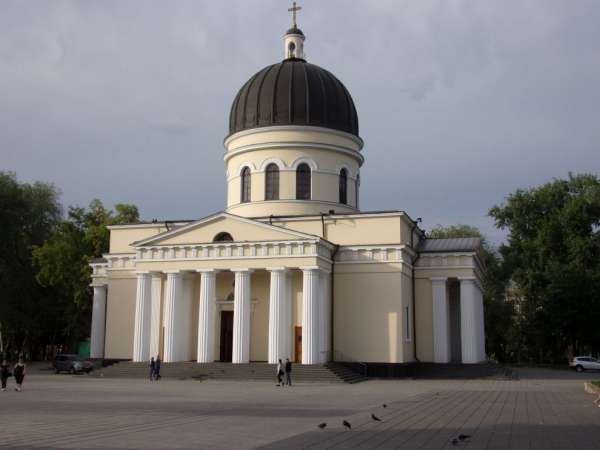
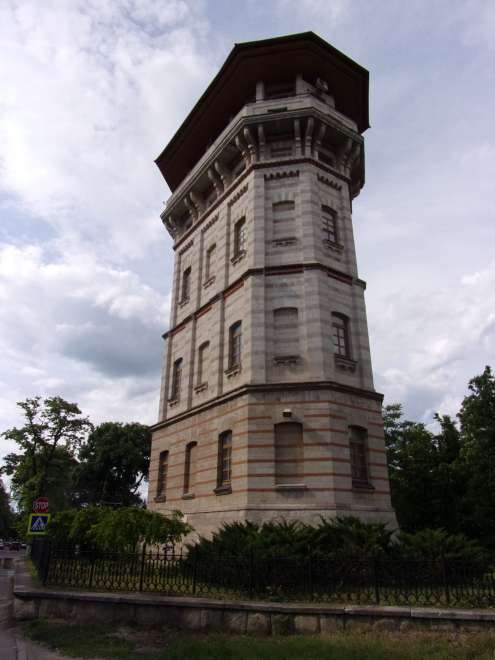
Chisinau, water tower.
Former waterworks with a museum and a view in the diplomatic district of Chisinau
Chisinau, Triumphal Arch
The Moldovan capital also has its „triumphal arch“
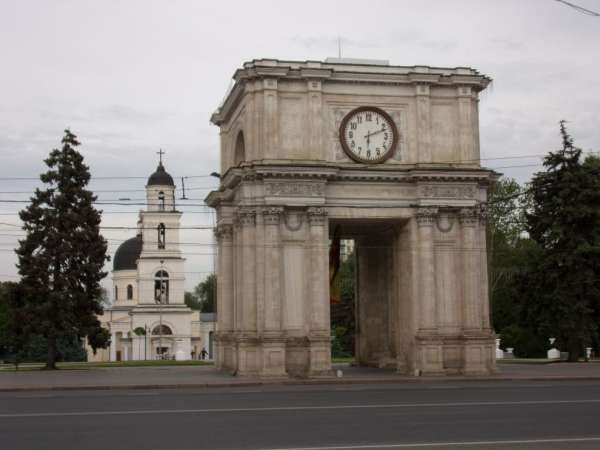

Chisinau, Presidential Palace
The Presidential Palace in Chisinau is more reminiscent of the modern headquarters of a renowned company
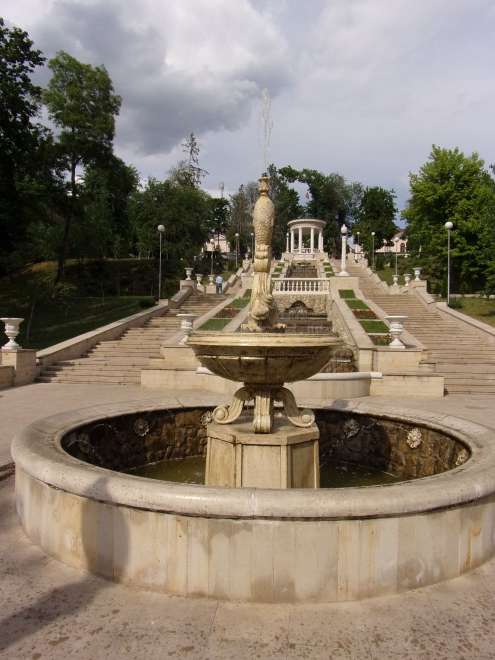
Chisinau, Valea Morilor Park
Cascading fountains and gazebos add a unique look to Valea Murilor Park.
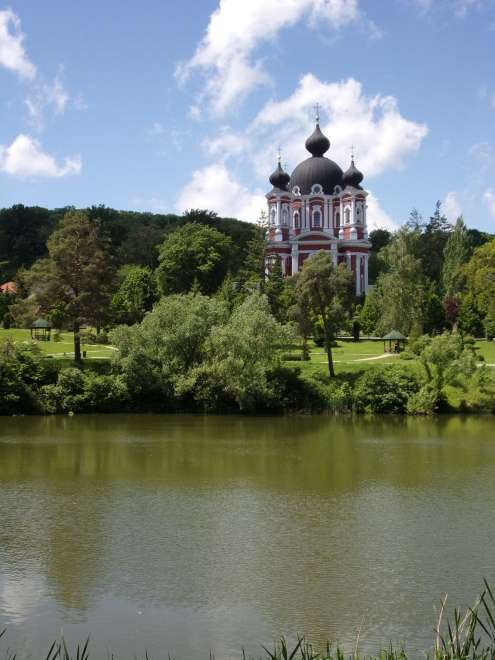
Curchi Monastery
A monastery on the shores of the lake of the same name, built since 1775.
Orheiul Vechi
This view must not be missing in any guide. A stone cross near the Church of St. Mary in the area of the former housing estate Starý Orhei.
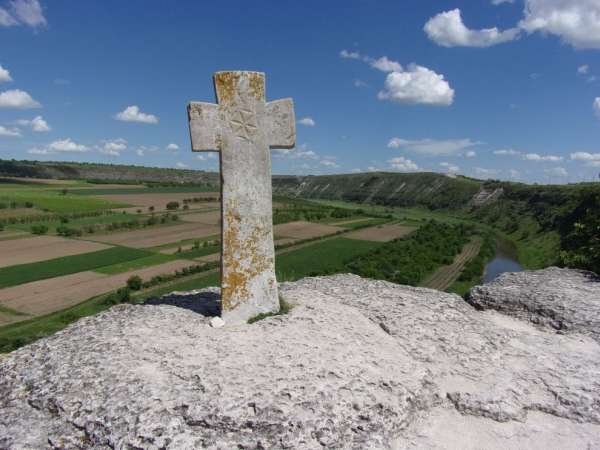
Hírjauca Monastery
A beautiful monastery, which is part of the sanatorium in Codro.
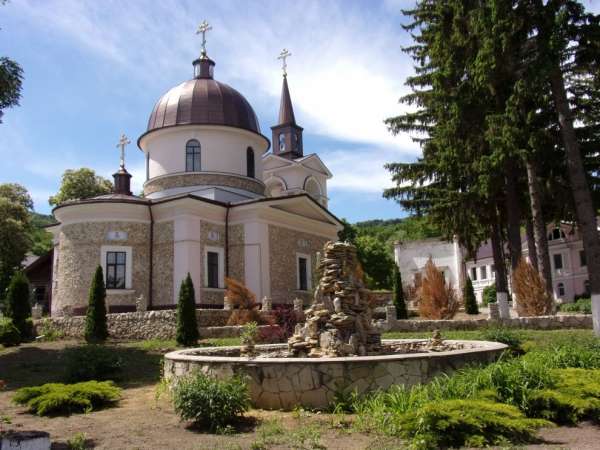
Lake Hírjauca
Pleasant landscape with a lake near the village Hírjauca.
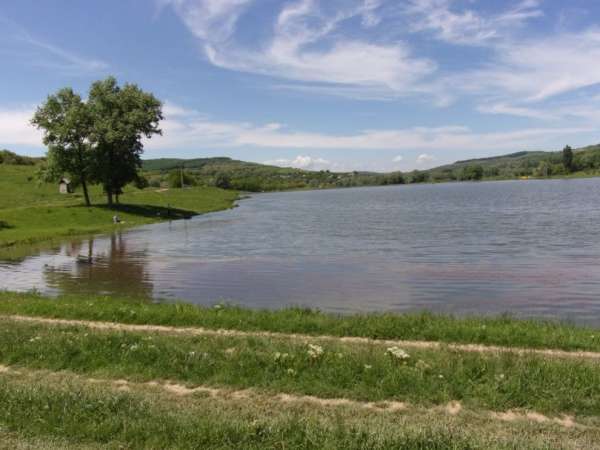
Hírjauca, small church
I saw the tower of this church from the sanatorium in Codro, about 2 km away, so I went to it



